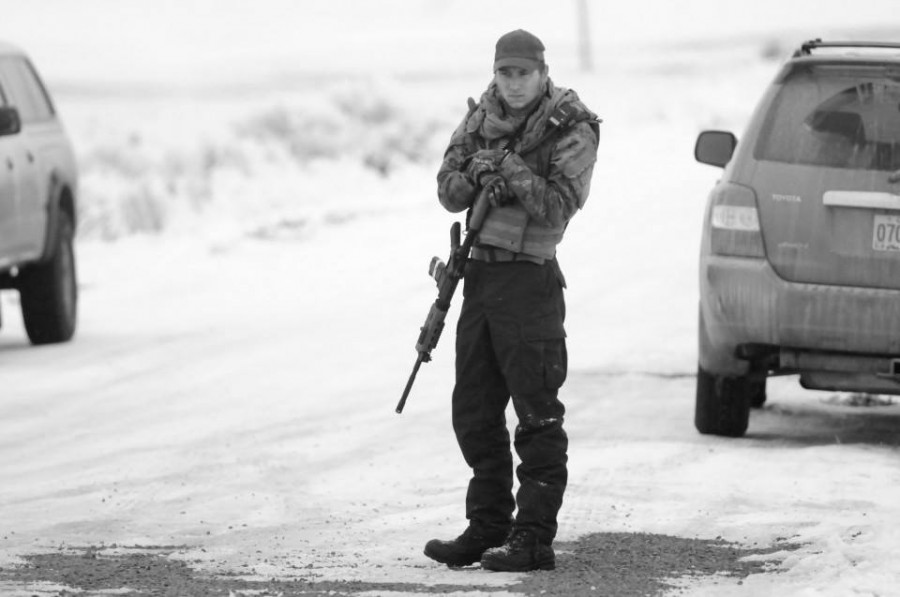Definition of Protesters: Thugs, Terrorists, or None of the Above
March Issue: Social Justice
“Armed anti-government activists,” “Occupiers,” and “Militiamen,” are all terms that have been used to describe the armed men who occupied buildings at Malheur National Wildlife Refuge in rural Oregon from January 3rd until February 11th. The far-right group has labelled themselves the “Citizens for Constitutional Freedom,” and initially claimed to be protesting on the behalf of two local ranchers who had gone to prison for arson on government-owned land in 2012. However, the group has increasingly shifted their focus towards the perceived “tyranny” of federal government’s ownership of local land, under the guise of a rather twisted concept of patriotism. The men at the front and center of this movement are not Oregon locals; they are a small group who travel the country looking for various anti-federal government conflicts to attach themselves to. The standoff began on January 3, 2016, and the men have continued to illegally occupy the federal buildings ever since. On January 27th, the leaders of this standoff, Ammon and Ryan Bundy, were arrested. One militiaman was killed in a shootout. However, it officially ended on February 11th after the final four occupiers surrendered. The standoff lasted 40 days in total, and it took the authorities almost a month before any kind of intervention occurred. The media had very mixed responses to these occupiers; some outlets have even expressed praise, while others have gone as far as to label them “terrorists.” So what do we call these men, and what does this label say about attitudes towards protestors in our society?
I will admit, “terrorist” is a strong word for these men, but simply calling them “protesters” gives them more credit than they deserve by a longshot. They are armed, dangerous, hostile and frankly, fighting for a rather illegitimate cause. One must look at the broader picture here as oftentimes, other peaceful (unarmed, might I add) protesters are not granted the same privilege of being called activists. Ironically, one of the occupiers cited a complaint that they were treated unfairly compared to Black Lives Matter activists, stating, “The Black Lives Matter movement, they can go and protest, close freeways down and all that stuff, and they don’t get any backlash; not on the level that we’re getting.” However, it seems as though some media outlets are a lot more ready to accuse peaceful Black Lives Matter protesters of being “thugs” and “criminals” than these armed men who have announced that they are “willing to kill and be killed if necessary.”
Although right-leaning outlets tend to zero in on the few Black Lives Matter protests that have resulted in violence, the movement itself has been largely peaceful. However, nothing about these heavily-armed men seizing a government building and vowing to use violence, if necessary, to defend their anti-government views, is peaceful; yet several headlines have referred to the group as “peaceful protesters.” Even many media outlets that have condemned the actions of these men dismissed them as no more than troublemakers.
Police have been known to use excessive amounts of force against Black Lives Matter protestors: using tear gas and deploying riot gear against unarmed, non-violent activists. However, these aggressive, armed men aren’t placed under this same kind of scrutiny; two days into the standoff, local law enforcement authorities admitted that they had no current plans to deal with the situation. Really, why weren’t these men considered more of a threat? Law enforcement let these armed men who threatened violence against authorities occupy these government buildings for nearly a month without doing anything about it; they were essentially allowed to just squat there for a while.
Would it have taken this long for law enforcement to take a stand against this illegal occupation if this militia was made up of any other race other than white? There is definitely a stark contrast in the general public’s reaction to these two movements, and it is clear that race is playing a role.
What would the media coverage have looked like if these men were black or middle eastern? Rachel Ramirez ’17 responds, “The nature of headlines in the articles would be very different – there would probably be an incredible amount of coverage and they would be more likely to be called terrorists or criminals … but since they’re white men, it’s seen as defending their rights and freedom.” It is clear that the media coverage and law enforcement reactions alike are indicative of a larger problem within America, which is simply that darker skin is perceived as more of a threat by the public. In the racially-charged world of modern-day American politics, it is important for us to acknowledge these issues of misrepresentation and inequality, and combat them in whatever ways we can.



































